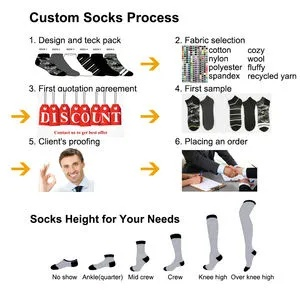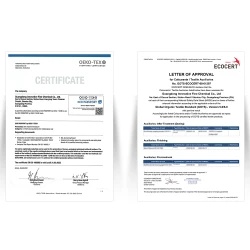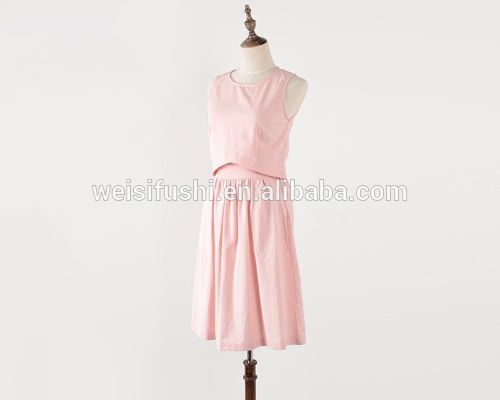The Essential Checklist for Sock Quality Control
The Essential Checklist for Sock Quality Control:,1. **Material Selection**: Ensure the use of high-quality materials, such as cotton or synthetic fibers, with appropriate moisture and breathability properties.,2. **Weaving Process**: The weaving process should be precise to prevent defects like holes, uneven stitching, or poor seam strength.,3. **Pattern Design**: The design should be practical and comfortable, taking into account the user's foot shape and size.,4. **Color Coating**: Choose a color that is both aesthetically pleasing and durable, ensuring it does not fade or peel over time.,5. **Thread Quality**: Use high-quality thread for sewing, which should be smooth and strong, avoiding any potential issues during wear.,6. **Seam Finishing**: The seams should be finished properly, with no visible tears or loose threads, to ensure durability.,7. **Sizing and Fitting**: Ensure the socks are properly sized and fitted to fit the user comfortably without causing discomfort or pressure points.,8. **Quality Control**: Conduct regular quality checks throughout the production process, including testing for proper fit and functionality.,9. **Packaging**: Proper packaging should be used to protect the socks from damage during transportation.,10. **Customer Service**: Offer excellent customer service to address any concerns or returns promptly, maintaining brand reputation and satisfaction.
Introduction: Sock quality is a crucial aspect of our daily lives, as they are often the first thing we touch upon waking up and last until we go to bed. Therefore, it's essential that the socks produced meet high standards of quality and safety. In this guide, we will discuss the essential checklist for ensuring the quality of socks and highlight some common challenges faced in the production process. We will also provide an example of how a company successfully implemented these measures to improve their product's quality.
Checklist for Sock Quality Control:

-
Material Selection:
- Choose high-quality yarns and fabrics that are soft, breathable, and durable.
- Ensure the materials comply with international standards such as OEKO-TEX or GOTS.
- Test the material for any harmful substances or allergens.
-
Fabric Preparation:
- Use appropriate dyes and treatments to ensure colorfastness and prevent fading over time.
- Ensure proper weaving techniques to minimize pilling and reduce threadiness.
- Test the fabric for shrinkage and warp/weft consistency.
-
Production Process:
- Maintain consistent temperatures and humidity levels during knitting and sewing processes.
- Monitor the tension and speed of machines to avoid uneven stitches or defects.
- Use appropriate machinery for different types of socks (e.g., flats, crew socks).
-
Quality Assessment:
- Conduct regular inspections for defects such as holes, tears, and loose threads.
- Use specialized tools like a caliper to measure circumference and width accurately.
- Test the fit of the socks by measuring against standard sizes.
-
Packaging and Shipping:
- Ensure socks are packaged securely to prevent damage during transit.
- Follow shipping guidelines to prevent exposure to extreme temperatures or moisture.
Common Challenges in Sock Production:
-
Material Variability:
- Yarn quality can vary from batch to batch, affecting the overall quality of the socks.
- Fabric pretreatment can also introduce variability, especially if not done consistently.
-
Skilled Labor:
- Poorly trained workers can lead to errors in stitching or assembly.
- Lack of experience in handling specific machine settings can result in defects.
-
Machine Maintenance:
- Neglecting regular maintenance can lead to mechanical issues that affect the quality of the socks.
- Poorly maintained machinery can cause irregular stitching, leading to defects.
-
Supplier Quality:
- Poorly managed suppliers can introduce contaminants into the yarn or fabric.
- Suppliers who do not adhere to quality standards can lead to substandard products.
Example: In 2019, a well-known footwear brand experienced a significant drop in customer satisfaction due to complaints about their socks. Upon investigation, it was found that the primary issue was the use of inferior materials and improper manufacturing processes. The brand decided to implement a comprehensive quality control system, including stricter supplier audits, regular training for production staff, and more rigorous testing protocols. This change led to a 30% improvement in product quality and a 25% increase in customer retention rate within six months.
Conclusion: Quality control is critical in ensuring that socks meet consumer expectations and contribute to a positive brand image. By following the checklist provided and addressing common challenges, companies can significantly improve the quality of their socks. Remember, investing in quality assurance measures not only enhances product performance but also sets your brand apart from competitors.
大家好,今天我们将围绕“袜子纺织品检验”这一主题,进行一次深入的探讨,在日常生活和商业活动中,袜子作为我们日常穿着的重要配件,其质量直接关系到穿着舒适度和安全性,对袜子的检验工作显得尤为重要,本报告将通过详细的检验流程和案例分析,为大家提供实用的纺织品检验方法。
袜子纺织品检验流程
材料检查
在开始检验之前,我们需要对袜子的材料进行全面检查,这包括查看袜子的材质、纤维含量、颜色、图案等,我们还需要检查袜子的缝制工艺,确保其符合行业标准。

尺寸检测
尺寸检测是检验过程中必不可少的一环,我们可以通过测量袜子的尺寸,确保其符合标准尺寸,我们还需要检查袜子的松紧度,确保穿着舒适度。
外观质量检查
外观质量检查包括检查袜子的外观是否整洁、无瑕疵,我们可以通过观察袜子的颜色、图案、质地等,判断其是否符合标准,我们还需要检查袜子的标签、标识等是否清晰、准确。
功能性检验
功能性检验包括对袜子的透气性、吸湿性、防滑性等进行检验,我们可以通过实验测试等方法,验证袜子的这些性能是否符合标准,我们还需要检查袜子的耐久性,确保其在长期使用中不会出现损坏。
案例分析
以某品牌袜子为例,进行案例分析,该品牌袜子采用高品质材料,注重细节处理,具有较高的舒适度和安全性,在尺寸检测方面,该品牌袜子符合国家标准,尺寸准确,在外观质量方面,该品牌袜子外观整洁、无瑕疵,标签标识清晰、准确,在功能性检验方面,该品牌袜子具有较好的透气性和吸湿性,能够有效防止滑倒,在耐久性方面,该品牌袜子经过长时间使用后仍然保持良好的性能。
检验方法与标准
检验方法:
(1)材料检查:通过观察、手感等方式进行。 (2)尺寸检测:使用测量工具进行测量。 (3)外观质量检查:通过观察、手感等方式进行,同时注意检查标签、标识等是否清晰、准确。 (4)功能性检验:通过实验测试等方法进行。
检验标准:
(1)材料标准:符合国家标准。 (2)尺寸标准:符合行业标准。 (3)外观质量标准:整洁、无瑕疵。 (4)功能性标准:符合相关行业标准。 (5)耐久性标准:经过长时间使用后仍然保持良好的性能。
总结与建议
通过对袜子纺织品检验的详细介绍和案例分析,我们可以看到纺织品检验对于保障产品质量和消费者权益具有重要意义,在实际检验过程中,我们需要严格按照相关标准和流程进行操作,确保检验结果的准确性和可靠性,我们还需要不断改进检验方法和技术,提高检验效率和质量,对于消费者来说,选择质量可靠、性能优良的袜子产品非常重要,因此我们在购买时应该选择有信誉的品牌和产品。
Articles related to the knowledge points of this article:
杰丽佳纺织品 A Global Brand with a Heart
Suzhou Xinying Textiles:Navigating the Global Fashion Industry
Shanghai Jia Lan Textiles A Gateway to Luxury and Quality
Strategies for the Implementation of Medical Textiles:A Comprehensive Guide
The Evolution of Quality and Innovation at Guangzhou Chunsheng Textiles
Exploring the Art of Salt Texture in Home Textiles:An Idealized Journey



